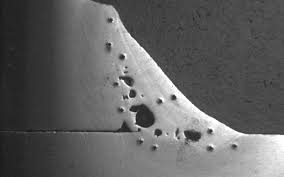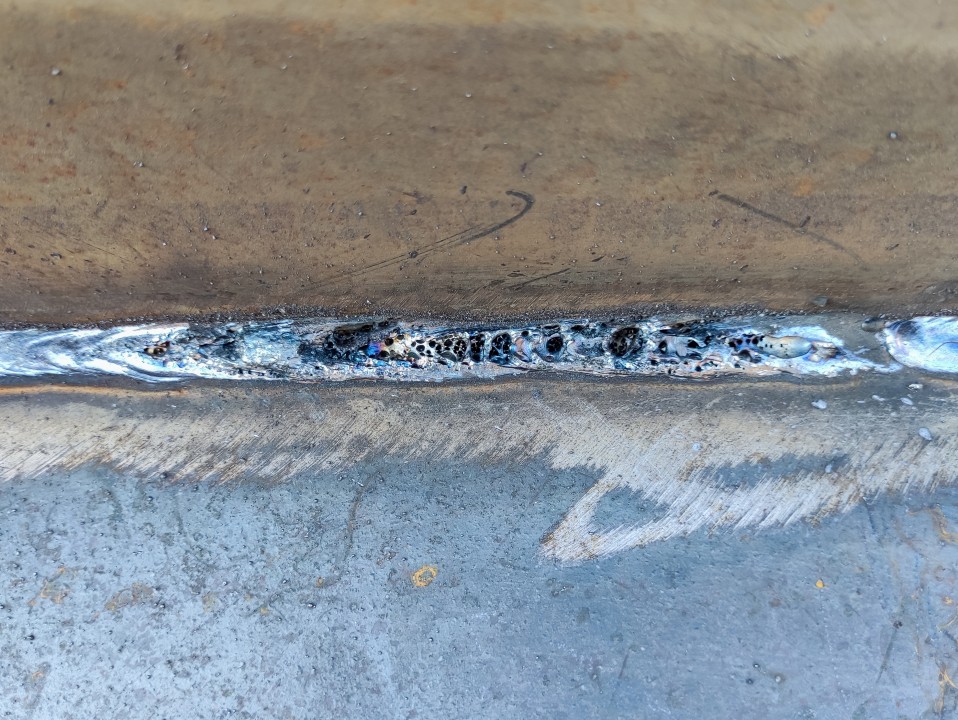Discover What is Porosity in Welding and Its Result on Architectural Honesty
Discover What is Porosity in Welding and Its Result on Architectural Honesty
Blog Article
Unwinding the Secret of Porosity in Welding: Tips for Lessening Problems and Taking Full Advantage Of Quality
In the detailed globe of welding, porosity continues to be a relentless challenge that can substantially impact the quality and stability of welded joints. As we dig right into the midsts of porosity in welding, discovering the keys to its prevention and control will certainly be paramount for professionals looking for to master the art of high-grade weldments.
Recognizing Porosity in Welding
Porosity in welding, an usual issue experienced by welders, describes the visibility of gas pockets or gaps in the bonded product, which can endanger the integrity and high quality of the weld. These gas pockets are usually entraped throughout the welding process as a result of different elements such as inappropriate protecting gas, contaminated base materials, or wrong welding parameters. The development of porosity can weaken the weld, making it susceptible to breaking and corrosion, inevitably causing structural failings.
By identifying the relevance of preserving proper gas shielding, ensuring the sanitation of base products, and optimizing welding setups, welders can significantly reduce the likelihood of porosity development. In general, a detailed understanding of porosity in welding is essential for welders to produce premium and sturdy welds.

Typical Root Causes Of Porosity
When inspecting welding procedures for potential top quality concerns, comprehending the typical causes of porosity is crucial for keeping weld integrity and stopping structural failings. Porosity, characterized by the visibility of tooth cavities or spaces in the weld metal, can significantly compromise the mechanical properties of a welded joint.
Furthermore, welding at incorrect criteria, such as exceedingly high traveling speeds or currents, can create extreme disturbance in the weld pool, trapping gases and causing porosity. By addressing these usual reasons via appropriate gas securing, product prep work, and adherence to ideal welding criteria, welders can decrease porosity and improve the high quality of their welds.
Methods for Porosity Avoidance
Applying effective precautionary measures is important in minimizing the incident of porosity in welding processes. One method for porosity avoidance is ensuring proper cleaning of the base metal prior to welding. Impurities such as oil, oil, corrosion, and paint can cause porosity, so complete cleaning using appropriate solvents or mechanical techniques is necessary.

Another secret safety net is the selection of the ideal welding consumables. Utilizing top notch filler materials and securing gases that appropriate for the base metal and welding procedure can considerably decrease the threat of porosity. In addition, keeping correct welding criteria, such as voltage, current, take a trip speed, and gas flow rate, is vital for porosity avoidance. Deviating from the advised settings can cause inappropriate gas coverage and inadequate blend, causing porosity.
Moreover, employing appropriate welding techniques, such as preserving a regular travel speed, electrode angle, and arc length, can help protect against porosity (What is Porosity). Ample training of welders to guarantee they adhere to best methods and top quality control treatments is additionally vital in minimizing porosity problems in welding

Best Practices for High Quality Welds
One trick practice is preserving correct tidiness in the helpful hints welding area. Thoroughly cleaning the work surface and bordering location before welding can aid reduce these concerns.
Another best method is to thoroughly pick the appropriate welding parameters for the particular materials being joined. Proper parameter option makes certain optimum weld infiltration, combination, and general high quality. Using top quality welding consumables, such as electrodes and filler metals, can considerably impact the last weld top quality.
Relevance of Porosity Control
Porosity control plays a critical duty in making sure the stability and quality of welding joints. Porosity, identified by the visibility of tooth cavities or voids within the weld steel, can substantially jeopardize the mechanical residential properties and structural integrity of the weld. Too much porosity damages the weld, making it a lot more at risk to fracturing, rust, and total failing under operational loads.
Reliable porosity control is vital for keeping the preferred mechanical properties, such as stamina, ductility, and sturdiness, of the welded joint. What is Porosity. By lessening porosity, welders can enhance the general top quality and reliability of the weld, making sure that it fulfills the performance demands of the desired application
Furthermore, porosity control is crucial for attaining the desired aesthetic look of the weld. Too much porosity not only deteriorates the weld but also interferes with its aesthetic appeal, which can be important in sectors where aesthetic appeals are important. Proper click for source porosity control methods, such as making use of the correct shielding gas, managing the welding criteria, and ensuring proper tidiness of the base products, are necessary for generating premium welds with marginal visit homepage issues.

Final Thought
Finally, porosity in welding is an usual defect that can compromise the high quality of the weld. By comprehending the reasons of porosity and carrying out correct avoidance strategies, welders can decrease defects and achieve higher quality welds. It is important to manage porosity in welding to make sure the stability and stamina of the end product. Executing finest methods for porosity control is important for accomplishing optimal welding results.
Report this page